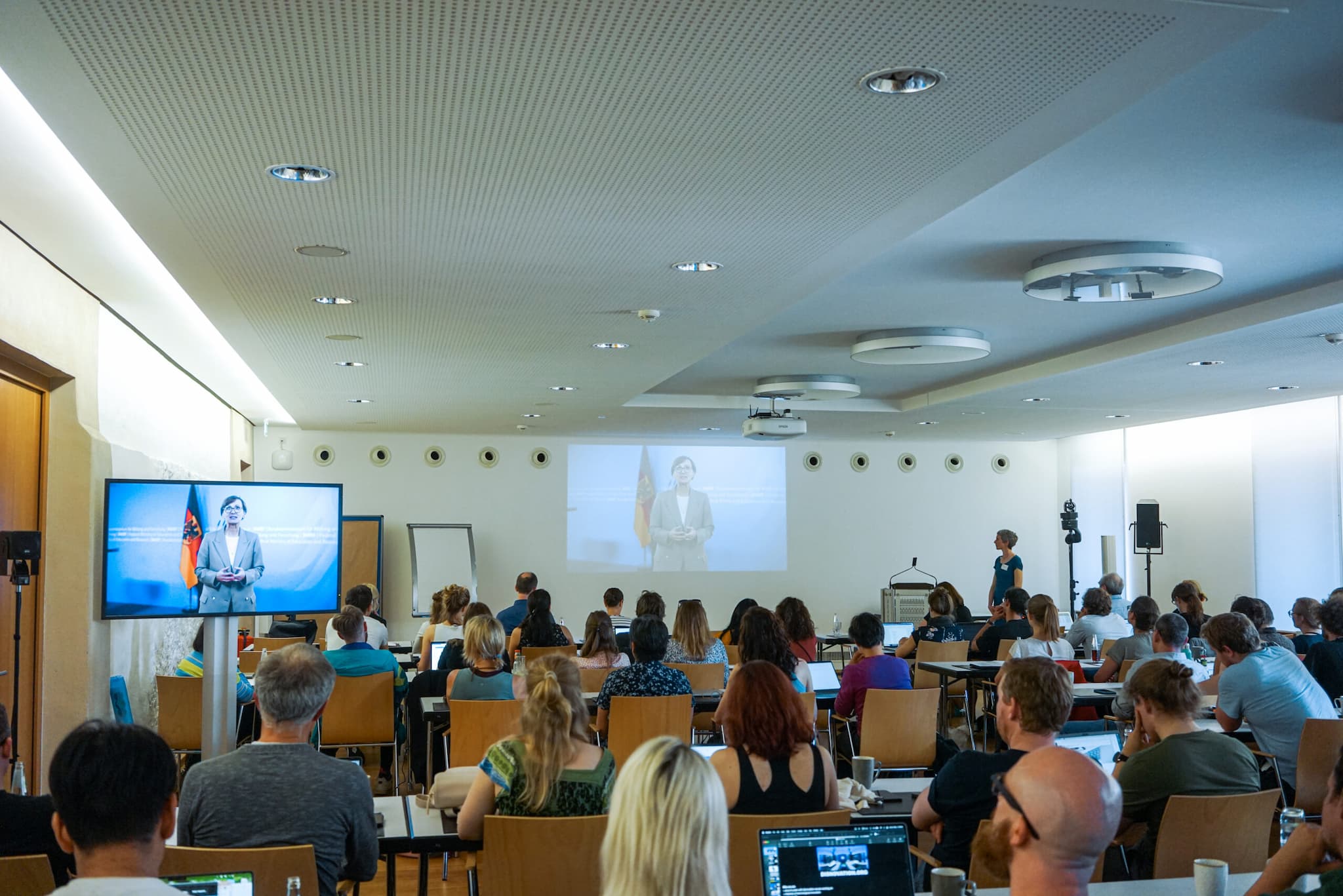Half-time at CDRterra

From May 22 to 24, the second CDRterra General Assembly will take place at the Haydau Monastery near Kassel. More than 100 scientists from 38 educational and research institutions throughout Germany will meet for an exchange about the progress of their research. They are welcomed by Federal Minister of Education and Research Bettina Stark-Watzinger.
For a total of three years, researchers at CDRterra investigate how and to what extent land-based methods of removing and storing carbon dioxide from the atmosphere can help limit climate change. They place particular emphasis on the potential risks and impacts of carbon dioxide removal (CDR) on the Earth system and other sustainable development goals, as well as on the social, ethical and legal aspects of such measures. The aim is to develop a low-risk portfolio of CDR methods in dialog with policymakers, industry and the public.
Issue of CO₂ removal more urgent than ever
“Whether in the Carbon Management Strategy, the Natural Climate Protection Action Program (Aktionsprogramm Natürlicher Klimaschutz, ANK) or, not least, the IPCC Synthesis Report 2023 – the topic of CO₂ removal is more urgent than ever. With our research, we are creating the knowledge base on which a sensible mix of methods for CO₂ removal can be developed for Germany,” says CDRterra coordinator Prof. Dr. Julia Pongratz from Ludwig Maximilian University (LMU). This is because, according to current research, even an immediate drastic reduction in emissions would no longer be sufficient to achieve the internationally agreed climate targets, unless additionally carbon dioxide is removed from the atmosphere.
“In order to successfully implement CO₂ removal methods, the participation and acceptance of the population is also required. That’s why one of CDRterra’s focal points is knowledge transfer and the participation of stakeholders and the general public. We convey knowledge about CDR through factsheets, museum exhibitions and educational projects, for example,” Pongratz continues.
CDRterra: Formats for knowledge transfer and dialogue …
In March, the first exhibition of the DACCUSS project on the development of CO₂-negative building materials was held in the Science Communication Lab at the Deutsches Museum in Munich. Another exhibition on CO₂ removal methods will follow in October. At the same time, the CDRSynTra team will organize an educational conference on CDR for teachers from all over Germany with the participation of ministers at the state and federal level, as well as a stakeholder workshop – also located at the Deutsches Museum in Munich.
… as well as laboratory experiments, literature review and modeling
While CDRSynTra aims to synthesize and transfer research results, the other nine CDRterra consortia focus more on laboratory, field, or computer work.
The PyMiCCS team, for example, launched its first experiment in late April. It investigates the combined effects and potential benefits of enhanced weathering and biochar as CDR methods. In a series of column experiments conducted under fixed concentrations of CO₂, the scientists will analyze the interactions between the two methods in tropical soil. The team will then extend the tests to typical German soils.

The GONASIP project investigates the effects and potential of agricultural and forestry CDR methods. To this end, the researchers have now conducted a literature review and analyzed the legal framework for the implementation of urban reforestation and CDR measures in agriculture.
BioNET, on the other hand, focuses on evaluating biobased negative emission technologies. The team has developed factsheets on 24 biobased CDR processes in areas such as peatland rewetting and paludiculture, and bioenergy with carbon capture and storage (CCS). These will serve as a basis for work and discussion at three regional stakeholder workshops the researchers will conduct this summer. They are also using the information from the factsheets to model potentials of the methods in Germany and map them in scenarios.